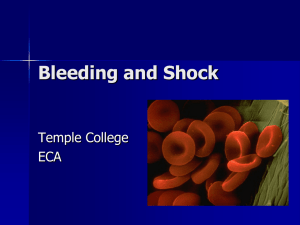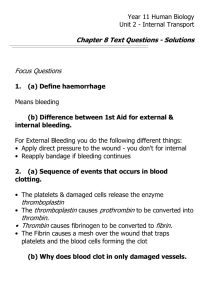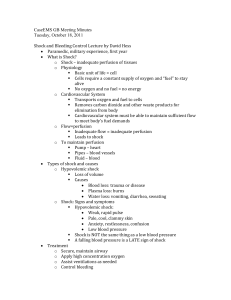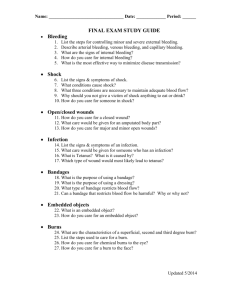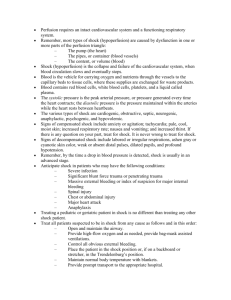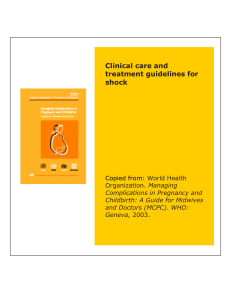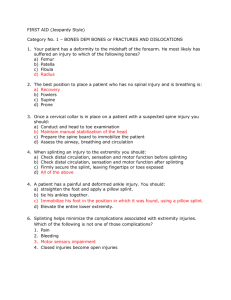Chapter 30: Bleeding - Paramedic.EMSzone.com
advertisement
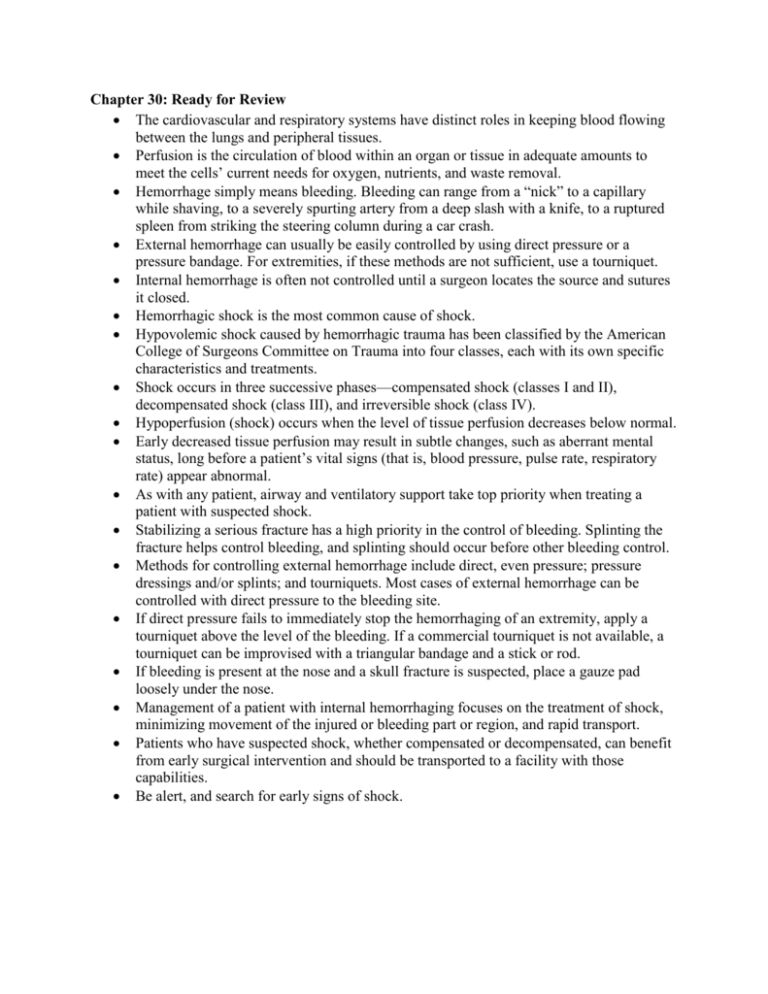
Chapter 30: Ready for Review The cardiovascular and respiratory systems have distinct roles in keeping blood flowing between the lungs and peripheral tissues. Perfusion is the circulation of blood within an organ or tissue in adequate amounts to meet the cells’ current needs for oxygen, nutrients, and waste removal. Hemorrhage simply means bleeding. Bleeding can range from a “nick” to a capillary while shaving, to a severely spurting artery from a deep slash with a knife, to a ruptured spleen from striking the steering column during a car crash. External hemorrhage can usually be easily controlled by using direct pressure or a pressure bandage. For extremities, if these methods are not sufficient, use a tourniquet. Internal hemorrhage is often not controlled until a surgeon locates the source and sutures it closed. Hemorrhagic shock is the most common cause of shock. Hypovolemic shock caused by hemorrhagic trauma has been classified by the American College of Surgeons Committee on Trauma into four classes, each with its own specific characteristics and treatments. Shock occurs in three successive phases—compensated shock (classes I and II), decompensated shock (class III), and irreversible shock (class IV). Hypoperfusion (shock) occurs when the level of tissue perfusion decreases below normal. Early decreased tissue perfusion may result in subtle changes, such as aberrant mental status, long before a patient’s vital signs (that is, blood pressure, pulse rate, respiratory rate) appear abnormal. As with any patient, airway and ventilatory support take top priority when treating a patient with suspected shock. Stabilizing a serious fracture has a high priority in the control of bleeding. Splinting the fracture helps control bleeding, and splinting should occur before other bleeding control. Methods for controlling external hemorrhage include direct, even pressure; pressure dressings and/or splints; and tourniquets. Most cases of external hemorrhage can be controlled with direct pressure to the bleeding site. If direct pressure fails to immediately stop the hemorrhaging of an extremity, apply a tourniquet above the level of the bleeding. If a commercial tourniquet is not available, a tourniquet can be improvised with a triangular bandage and a stick or rod. If bleeding is present at the nose and a skull fracture is suspected, place a gauze pad loosely under the nose. Management of a patient with internal hemorrhaging focuses on the treatment of shock, minimizing movement of the injured or bleeding part or region, and rapid transport. Patients who have suspected shock, whether compensated or decompensated, can benefit from early surgical intervention and should be transported to a facility with those capabilities. Be alert, and search for early signs of shock.
